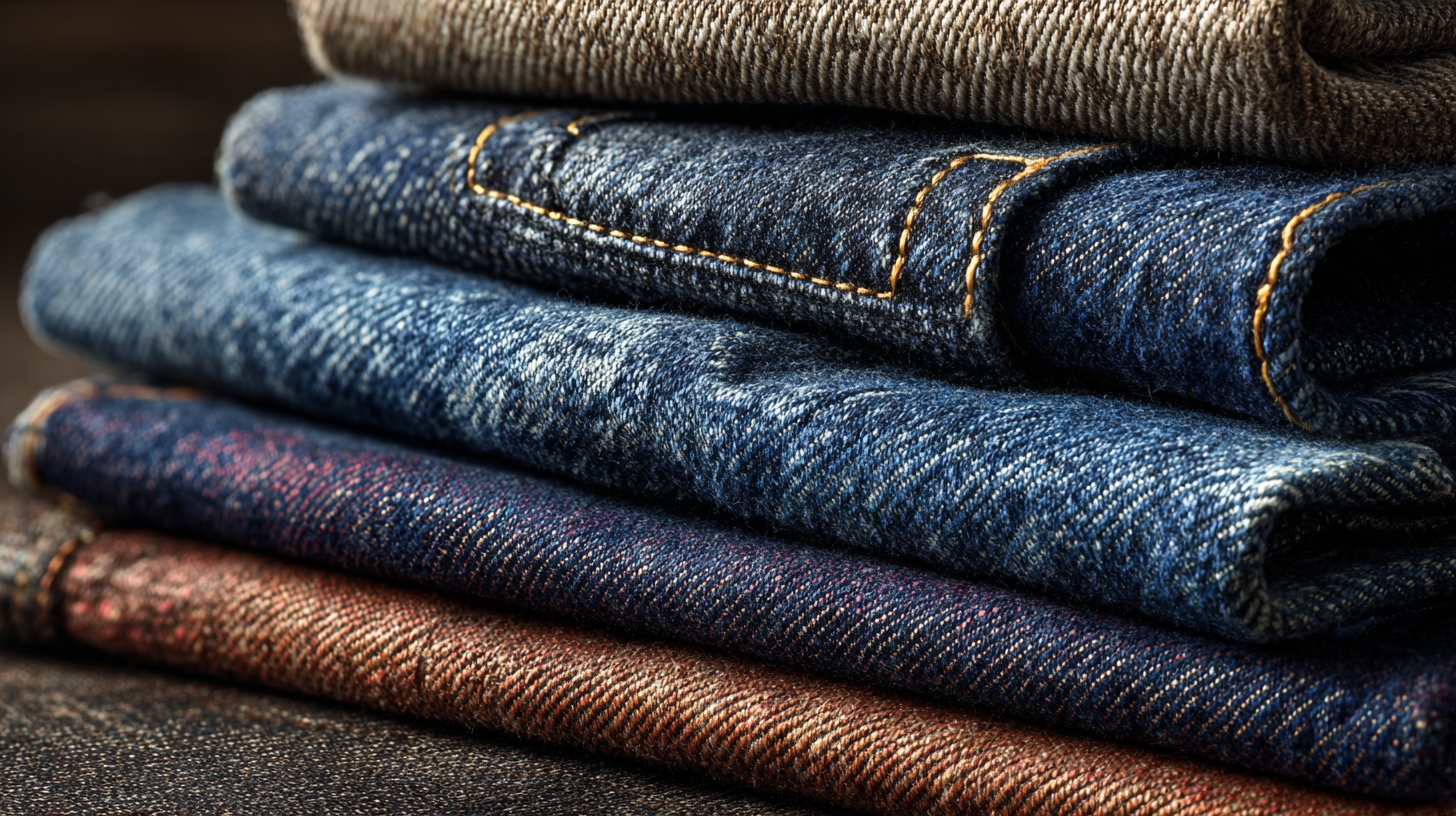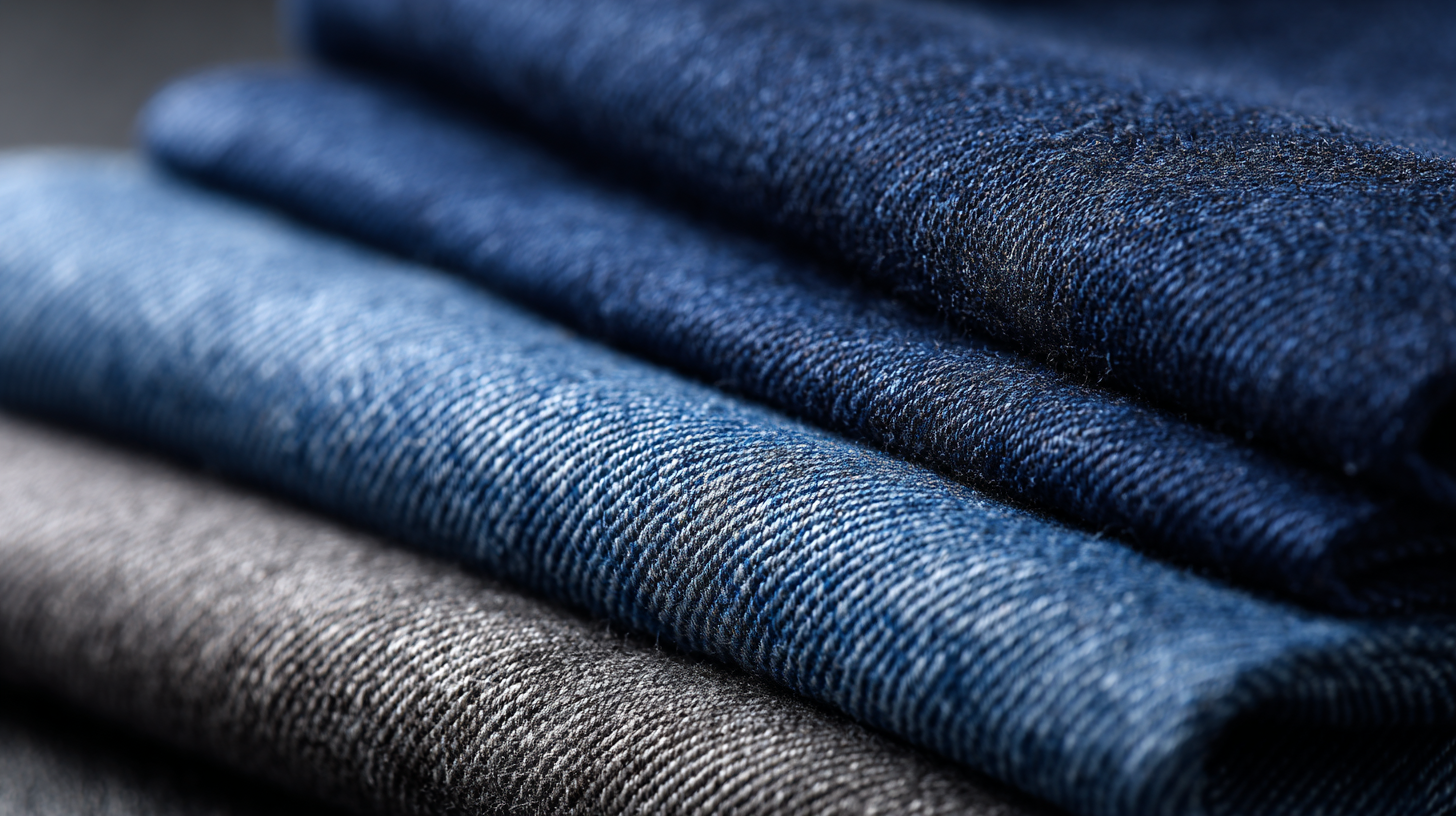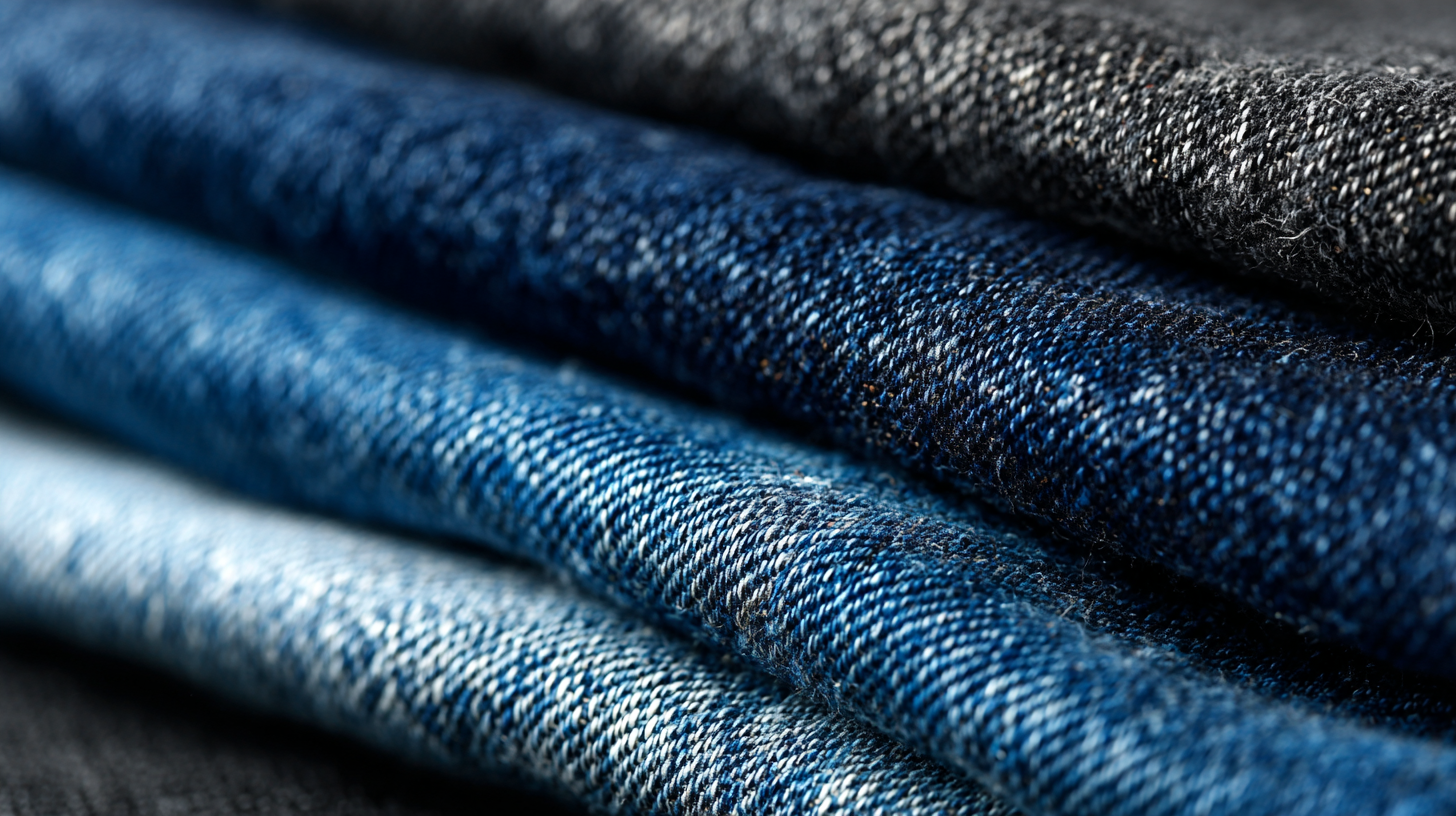 In recent years, the fashion industry has undergone a significant transformation towards sustainability, with recycled denim fabric emerging as a front-runner in eco-friendly textile innovations. According to a report by the Global Fashion Agenda, the production of denim consumes a staggering 7,000 liters of water per kilogram, prompting the industry to seek sustainable alternatives. Recycled denim fabric not only helps in conserving water but also reduces waste; it's estimated that about 92 million tons of textile waste are generated annually, with a significant portion comprising denim. As the global demand for eco-conscious apparel surges, countries like China have taken the lead in manufacturing top-quality recycled denim, exporting it worldwide. This blog will analyze the quality and sustainability of recycled denim fabric, examining its potential to revolutionize the textile industry while setting new standards for environmental responsibility.
In recent years, the fashion industry has undergone a significant transformation towards sustainability, with recycled denim fabric emerging as a front-runner in eco-friendly textile innovations. According to a report by the Global Fashion Agenda, the production of denim consumes a staggering 7,000 liters of water per kilogram, prompting the industry to seek sustainable alternatives. Recycled denim fabric not only helps in conserving water but also reduces waste; it's estimated that about 92 million tons of textile waste are generated annually, with a significant portion comprising denim. As the global demand for eco-conscious apparel surges, countries like China have taken the lead in manufacturing top-quality recycled denim, exporting it worldwide. This blog will analyze the quality and sustainability of recycled denim fabric, examining its potential to revolutionize the textile industry while setting new standards for environmental responsibility.
 Recycled denim is not just a trendy material; it represents a significant shift towards sustainability in the fashion industry. Understanding how recycled denim is made is crucial to appreciate its impact. The process often involves collecting discarded jeans, shredding them down, and processing the fibers into new fabric. This method reduces waste and minimizes the resources needed to create new materials, significantly lowering the carbon footprint of denim production. By choosing recycled denim, consumers can contribute to a more sustainable fashion ecosystem.
Recycled denim is not just a trendy material; it represents a significant shift towards sustainability in the fashion industry. Understanding how recycled denim is made is crucial to appreciate its impact. The process often involves collecting discarded jeans, shredding them down, and processing the fibers into new fabric. This method reduces waste and minimizes the resources needed to create new materials, significantly lowering the carbon footprint of denim production. By choosing recycled denim, consumers can contribute to a more sustainable fashion ecosystem.
When shopping for denim, consider opting for brands that prioritize recycled materials in their production processes. Look for certifications or labels that indicate the use of sustainable practices and materials, ensuring that your purchase supports the circular economy. Additionally, caring for your denim properly can extend its life and decrease the need for new production, further supporting sustainability efforts.
One key tip is to wash your jeans less frequently and in cold water to reduce energy consumption and preserve fabric quality. When it's time to dispose of your old jeans, consider recycling them through programs offered by various brands. This way, your old denim can be transformed into new products, closing the loop in the fashion cycle and promoting a healthier planet.
When it comes to denim fabrics, the choice between traditional and recycled options can significantly impact quality and sustainability. Traditional denim, often made from virgin cotton, offers durability and a classic feel. However, its production is resource-intensive, requiring large amounts of water and pesticides which contribute to environmental degradation. Many consumers appreciate traditional denim for its iconic structure and longevity, but the ecological cost of production is increasingly coming under scrutiny.
On the other hand, recycled denim fabrics are engineered from post-consumer or post-industrial waste, reducing the reliance on new resources. While recycled denim can sometimes be perceived as inferior due to variations in fiber quality, advancements in textile technology are narrowing this gap. Modern manufacturing processes enhance the strength and aesthetic appeal of recycled options, making them both sustainable and stylish. Brands that prioritize recycled materials often report high customer satisfaction, as consumers become more environmentally conscious and seek to make responsible choices in their wardrobe. The growing popularity of recycled denim highlights a shift towards a more sustainable fashion industry, balancing quality and environmental responsibility.
The fashion industry is increasingly recognizing the paramount importance of sustainability, and recycled denim is at the forefront of this movement. According to a report from the Ellen MacArthur Foundation, the fashion sector is responsible for over 92 million tons of waste each year, highlighting the urgent need for innovative recycling solutions. Recycled denim fabric not only helps reduce this waste but also significantly lowers water consumption and carbon emissions. For instance, producing recycled denim can save up to 7,000 liters of water per kilogram of fabric, compared to conventional denim production methods.
To make more sustainable choices, consumers should look for brands that prioritize recycled materials in their collections. Checking for certifications such as Global Recycled Standard (GRS) can ensure that the denim you purchase meets rigorous sustainability criteria. Additionally, consider adopting a circular approach by recycling old denim products instead of discarding them, as this contributes to a more sustainable fashion ecosystem.
When shopping for recycled denim, remember to check the composition. Look for blends that contain at least 30% recycled fiber for a more substantial environmental impact. Furthermore, supporting local brands that focus on sustainable practices can contribute to reducing the carbon footprint associated with transportation and manufacturing, enabling a more eco-conscious wardrobe.
The recycled denim movement is gaining momentum, with innovative brands at the forefront leading the charge towards sustainable fashion. With denim production accounting for approximately 1.5 billion pairs of jeans sold annually, the environmental impact is substantial. Brands like LEVI's and Patagonia are integrating recycled denim into their collections, significantly reducing water usage and carbon emissions. According to a 2022 report by the Ellen MacArthur Foundation, switching to recycled denim can save up to 84% of the water typically consumed during the traditional denim production process, emphasizing the transformative potential of this initiative.
When exploring recycled denim options, it’s essential to consider both quality and sustainability. For instance, brands utilizing post-consumer waste often blend fibers with organic cotton to maintain durability while reducing reliance on conventional cotton farming, which can be water-intensive and harmful. As you shop, look for certifications like Global Recycled Standard (GRS) to ensure that the products meet high environmental and social standards.
Tip: Always read labels carefully; they can provide insights into the percentage of recycled content and the production processes used, helping you make more informed choices. Embrace brands that prioritize transparency and sustainable practices, as these choices contribute not only to personal style but also to a healthier planet.
The market for recycled denim is poised for significant growth, driven by increasing consumer awareness of sustainability and the environmental impacts of fast fashion. According to a recent report by the Textile Exchange, the global market for recycled textiles is expected to grow by 20% annually, which suggests a robust future for recycled denim. Companies are adopting innovative practices to transform post-consumer denim into high-quality fabric, which offers both aesthetic appeal and reduced environmental footprint.
As we look ahead, advancements in technology will further enhance the quality of recycled denim. Brands are already experimenting with new weaving techniques and dyeing processes that maintain the durability and style of traditional denim while minimizing the use of water and chemicals. The Circular Fashion System Commitment also emphasizes the need for brands to incorporate recycled materials, pushing the industry towards more sustainable practices.
Tips: To contribute to this trend, consumers can seek out brands that prioritize recycled denim and transparent sourcing practices. Additionally, consider upcycling old denim pieces at home to reduce waste and explore DIY projects that extend the life of your favorite jeans. Staying informed about sustainable fashion can empower you to make choices that benefit both your wardrobe and the planet.

